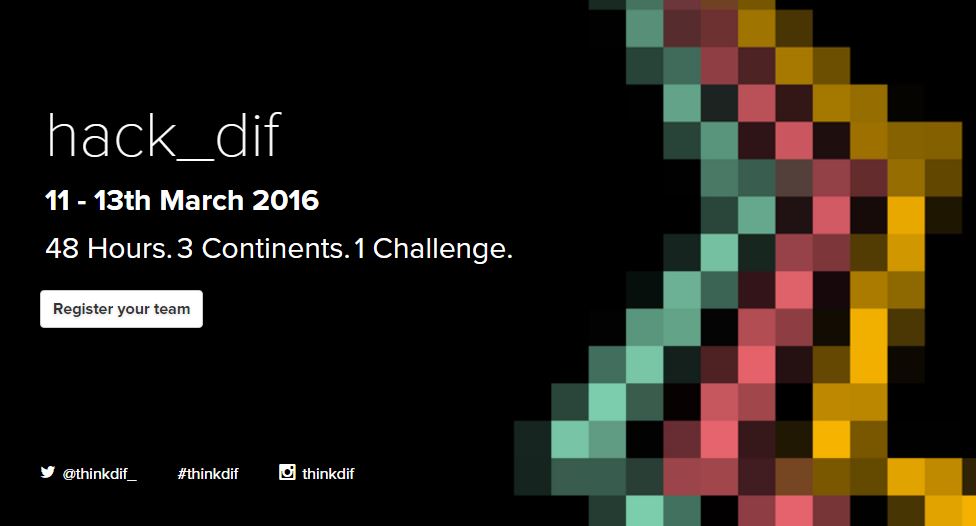Make smart connected products better for our future circular economy
10/02/2016

Do you have ideas to help make the things we use work better for us and help the environment? Could you make them a reality with the help of an international team located on three continents in just 2 days? This is the task we’re setting ourselves at hack_dif on 11-13 March 2016.
With support of the Ellen MacArthur Foundation, Cisco and Philips, we will be setting up for a hackathon weekend at Cranfield University, and working remotely with innovative collaborators at MIT in Massachusetts in the United States, and at the National Institute of Design in Gujarat in India. After just 48-hours we will be presenting workable solutions, which could contribute to a circular economy (one that makes the most of our resources rather than squandering them). And, you can be a part of this epic challenge too – as long as you can join us in person in the UK, USA or India! (If you want to take part – register online here).
Teams made up of hackers, thinkers, doers, designers, pragmatists, visionaries, tech-heads and creatives will come together to consider the future of ‘connected products’. This simply means any ‘smart’ technology like smart TVs or other home appliances that connect to the internet. It isn’t just consumer goods like toasters and fridges; it might also be a whole company’s production line or air conditioning.
The market for smart and connected products is worth millions worldwide. As we become more used to the benefits of connecting everything to the web, the sector is expected to grow. But are these millions of products destined to end up in landfill? We already know electronics contain expensive components and metals in their circuitry, and that landfill waste has the potential to pollute land for decades to come.
So, at hack_dif we’re going to find a solution. We’re asking the best minds to come together and consider whether we could use the same smart capabilities of these products to extend their useful life – for example through preventative maintenance or remote repair. Teams might also consider how we use technology to ensure products are used in the best way – reducing wear on certain parts for example to prevent single point failures, or a ‘sharing economy’ that allows users access to a product when they need it rather than gathering dust. And, solutions might also consider what happens when a product really is at the end of the line. How does a product get back to a manufacturer to be recycled or remanufactured? All of these considerations could help us get closer to a circular economy model.
What will we come up with? Who knows! We’ll share the process and the products on this blog after the hackathon is complete.
Categories & Tags:
Leave a comment on this post:
You might also like…
Preparing your work for Turnitin submission
Before submitting your work into Turnitin for similarity checking, if you have used referencing software then you may need to take some important steps first. Mendeley and Zotero integrate with MS Word by embedding field ...
The fast track to supercar engineering: My Cranfield journey
It’s been a dream come true to work on some of the world’s most prestigious supercars – the Aston Martin Valhalla, McLaren 750 & Artura, the GMA T.33. But every successful ...
Automotive Engineering: From student to hypercar innovation at Rimac
We sat down with recent graduate Thomas Perrin, to discuss how his year on the MSc in Automotive Engineering at Cranfield University propelled him from the lecture hall directly into the ...
What this year at Cranfield really meant to me
Every Cranfield journey is unique. In this alumni reflection, Zachea Scicluna shares what her year at Cranfield truly meant, from facing uncertainty to gaining hands-on experience in industry-backed projects. I’ve been reflecting (and delaying) ...
Preparing for assignments and exams?
Sorry! We know it seems a bit mean to mention the exams in January rather than looking forward to the break before it! However, we know many of you will be thinking about your forthcoming ...
Screening for FTSE 100 companies on Bloomberg
So you’re researching an index and need some data on its constituent companies? Bloomberg’s Equity Screening tool makes light work of this, not just for the FTSE, but for indices, exchanges and sectors worldwide. Type EQS ...






